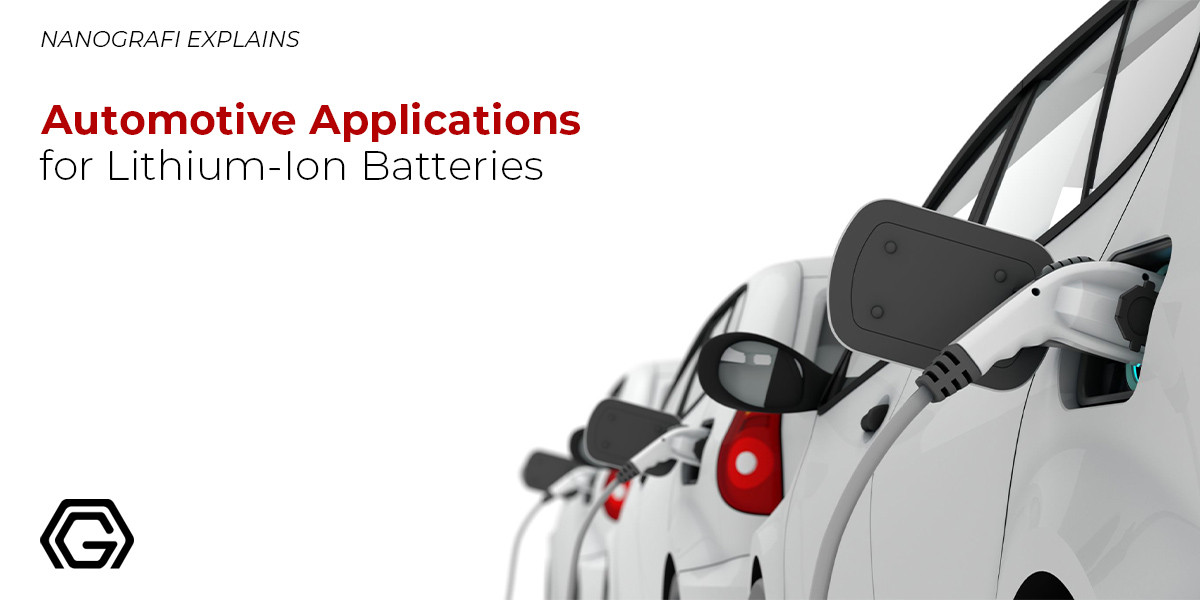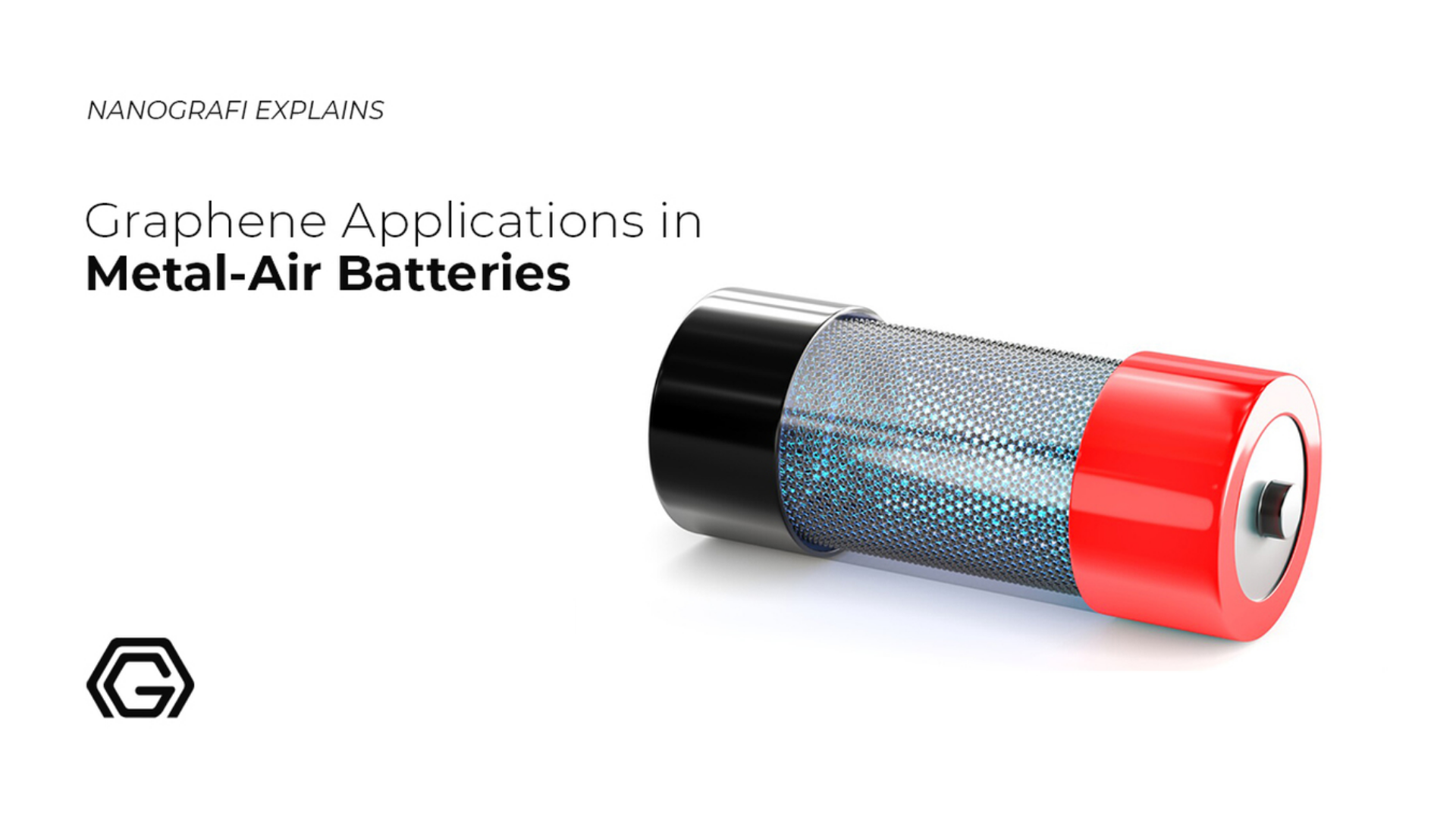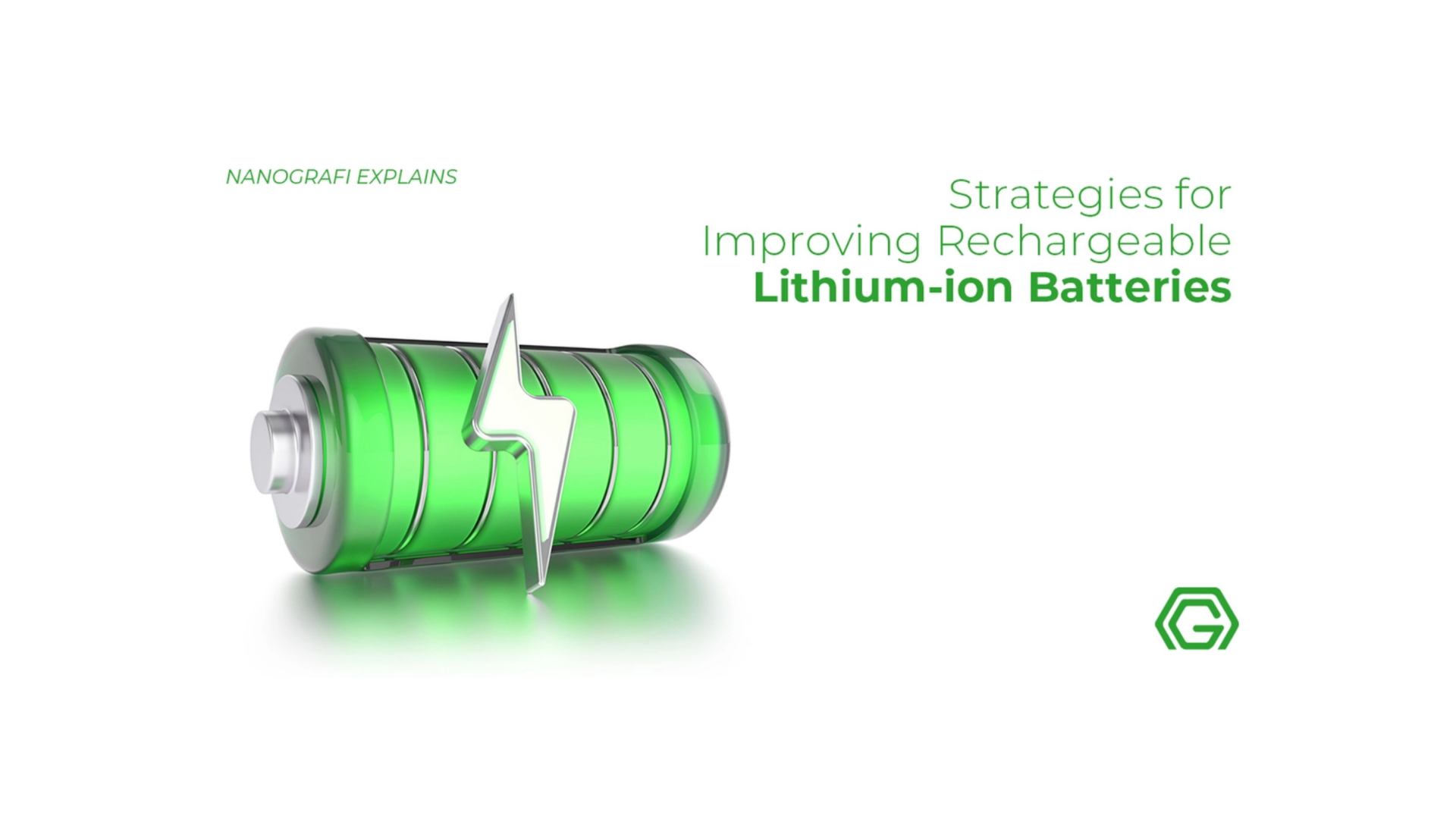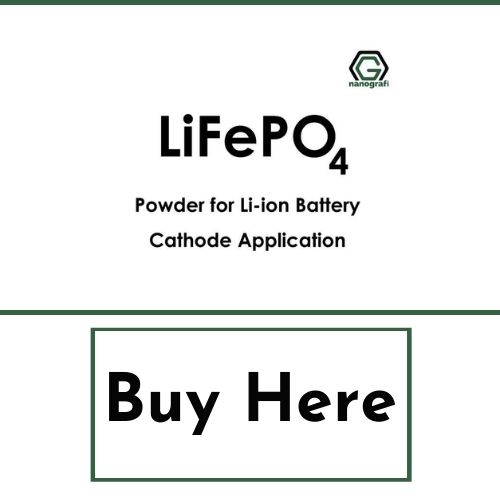Automotive Applications for Lithium-Ion Batteries
Currently, the most appropriate energy storage device for powering electric vehicles (EVs) is lithium-ion batteries (LIBs) because of their interesting characteristics like high power density, high energy density, long life cycle, lack of memory effect, and high energy efficiency.
Because of these beneficial characteristics, they are lighter and smaller as compared to any other conventional rechargeable batteries like nickel-metal hydride batteries (Ni–MH), and nickel-cadmium batteries (Ni-Cd), and lead-acid batteries.
Modern electric vehicles, still, face technological barriers like reliability, safety, high cost, etc., and performance barriers like a lifetime, charging rate, range, etc., thus restricting their widespread adoption. There has been a start recently in the utilization of the Li-ion batteries in a broad range of automotive passenger car applications. In conclusion, the battery pack's weight for the electric vehicle applications will be reduced with the help of the enhancements to the lithium-ion cell chemistry, the pack design will give the largest weight gains.
Introduction
Li-ion or Lithium-ion battery is a rechargeable battery type that is made up of cells in which during discharge, the lithium ions move through an electrolyte from the negative electrode to the positive electrode, and from the positive to the negative electrode when charging. Graphite is typically used as the material at the negative electrode by the Lithium-ion cells whereas an intercalated lithium compound is utilized as the material at the positive electrode. Low self-discharge, no memory effect (other than the LFP cells), and a high energy density are possessed by lithium-ion batteries. The manufacturing of the cells is done for prioritizing either power or energy density. Although, this can be dangerous as flammable electrolytes are contained by them and they can result in fires and explosions if they are incorrectly charged or damaged.
In 1985, Akira Yoshino developed a prototype lithium-ion battery according to the research that was earlier done during the 1970s-1989s by Koichi Mizushima, Rachid Yazami, M. Stanley Whittingham, and John Goodenough, and then in 1991, a team of Asahi Kasei and Sony led by Yoshio Nishi developed a commercial lithium-ion battery. Lithium-ion batteries are getting famous for aerospace and military applications. They are utilized commonly for electric vehicles and portable electronics. A separator is used by a lithium-ion battery for separating the cathode from the anode, otherwise, there will be no current and the complete system's safety will also be compromised. Different types of lithium-ion batteries have different properties regarding cost and safety, performance, and chemistry.
Utilization of Lithium-ion Batteries
Lithium polymer batteries are mostly utilized by the handheld electronics (polymer gel as the electrolyte), a graphite anode, and lithium cobalt oxide (LiCoO2) as a cathode material, and joined, they provide a high energy density. Better rate capability and longer lives are offered by the lithium nickel manganese cobalt oxide (NMC or LiNiMnCoO2), Li2MnO 3-based lithium-rich layered materials, LMR-NMC), and lithium iron phosphate (LiFePO4). These batteries are utilized broadly for medical equipment, electric tools, and other functions. NMC and its derivatives are utilized broadly in transport electrification, one of the major technologies to lessen the greenhouse gas emissions from vehicles.
Toxic waste can be created by batteries that are improperly recycled, particularly those that are at fire risk and come from toxic metals. In addition, major issues are possessed by both the lithium and the other main strategic minerals that are utilized in the batteries, with other materials usually being conflict minerals like cobalt and water-intensive in often arid regions. Some researchers have been motivated by both the environmental issues for enhancing alternatives like iron-air batteries and mineral efficiency.
Research Areas for Lithium-ion Batteries
Increasing charging speed, lessening cost, enhancing safety, increasing energy density, and extending lifetime are among the other topics that are included in the research areas for lithium-ion batteries. There has been researched on the non-flammable electrolytes as a way for increased safety based on the organic solvents' volatility and flammability that are typically utilized in the electrolyte. Heavily fluorinate systems, ionic liquids, polymer electrolytes, ceramic solid electrolytes, and aqueous lithium-ion batteries are among the strategies.
Most commonly, the lithium-ion cells are made up of an organic solvent, a lithium salt's electrolyte, a lithium metal oxide cathode, and a graphite anode. It is because of its large standard electrode potential of -3.04 V that lithium is an appropriate candidate for an electrochemical cell, which leads to a high operating voltage (that facilitates both energy and power) and it is the lowest density metal that's known (which lessens weight). A comparatively small and light source of energy is provided by such cells and they are now being made in extremely large quantities, for instance, more than 1 billion cells per year.
Tens to thousands of individual cells are packaged together to make a lithium-ion battery in an automotive application for offering the desired energy, power, and voltage. Normally, the individual cells are mounted into various modules, which are arranged then into the whole battery pack. Binding carbon dioxide emissions targets are now being put in place in various countries for cars, for instance by 2015 in Europe, 130 g km-1 is the requirement for fleet average CO2 emissions whereas, by 2021, they will be 95 g km-1.
This article will also demonstrate that a significant reduction of the CO2 emissions of a car is possible by utilizing a lithium-ion battery. It is because of this reason that now more and more lithium-ion batteries are being utilized in automotive applications. Following is the structure of this paper. First, there will be various automotive passenger car applications for the Li-ion batteries and their major requirements will be listed. We will also look at some future developments in lithium-ion batteries.
To get more information about Graphene Applications in Metal-Air Batteries,
you can read our blog post here.
Benefits of Lithium-Ion Batteries
Low to Minimum Maintenance
The low maintenance batteries of the lithium-ion batteries are one of the reasons for their popularity. A huge price of maintenance and ownership is possessed by most of the other cells like the Nickel Cadmium batteries.
Low Self Discharge
Lithium-ion batteries possess clear benefits with and without being utilized too. The self-discharge rate, a common phenomenon in batteries, when kept idle, is very low. It is like being negligent in most cases.
High Energy Density
The high energy density of the lithium-ion battery is one of the biggest benefits of lithium-ion batteries. The high current output is maintained by the Lithium-ion charges and they can remain longer between charges too during that time, making it the best-suited battery for most modern needs. It is because of the lithium-ion batteries that we are able of spending more and more time on our mobile phones, and are always ready and don't spend much time connected to a charging cord.
Options
The availability of lithium-ion batteries in all sizes and shapes is one of the lithium-ion batteries' biggest benefits as it gives users a broad number of options to select according to their requirements.
Uses
Commercial lithium-ion batteries are utilized in electric vehicles and consumer electronics in the vast majority.
Such devices include:
- Power tools: Lithium-ion batteries are utilized in a tool like various garden equipment including hedge trimmers and whipper-snippers, saws, sanders, and cordless drills.
- Portable devices: Flashlights (Torches), handheld game consoles, electronic cigarettes, camcorders, digital cameras, tablets, laptops, smartphones, and mobile phones are included in these.
- Electric vehicles: The electric vehicle batteries are utilized in advanced electric wheelchairs, personal transporters, electric bicycles, electric scooters and motorcycles, hybrid vehicles, and electric cars. They were also used in Mars Curiosity Rover, aircraft, model aircraft, radio-controlled models, and telecommunications applications. Li-ion batteries are discussed usually as a possible option for grid energy storage.
Applications of Li-Ion Batteries
Lithium-ion batteries are present in all kinds of sizes and shapes as is told above, making them a perfect candidate for power needs without the system's size being of any importance. Power solutions are offered by the Lithium-ion batteries from the energy storage solutions to the portable energy solutions, across the spectrum.
Lithium-ion batteries' most common applications are:
- Energy Storage Systems
- Electric Mobility
- Laptops, mobiles, and others usually utilized consumer electronic goods.
- UPS/Power backups.
The Lithium-ion battery comes in different kinds of packaging as there are various usages of it. Although, there are some general benefits of utilizing a traditional Lithium-ion battery other than the other traditional batteries.
Automotive Applications for the Lithium-Ion Batteries
There are various applications for lithium-ion batteries in passenger cars. The considered ones are selected because they can potentially do so in the future or they use the lithium-ion batteries already. It should be noted that various standard automotive requirements should be met by all of the utilized lithium-ion batteries in the cars, those requirements include vibration resistance (of at least 4.5 root-mean-square-acceleration (grms)), range of temperature of -40 degrees celsius to +60 C at least, and life (the typical requirements are 8–15 years). There will be a brief description of each of the applications.
Starting Lighting Ignition
For the last 100 years, starting lighting ignition (SLI) has been the car battery in almost all cars. This is usually a 12 V battery whereas approximately 14 V is the normal voltage when it is being charged by the alternator and in utilization in the car. This is a lead-acid battery in all of the current production cars, however, there are some cars now that utilize a Li-ion battery either as an option (some Porsche Models for instance) or as standard (the McLaren P1 for instance). The lithium-ion battery is a US$1700 option in the Porsche Boxster Spyder and like the standard lead-acid battery, it has the same mounting points and form factor, however, its weight is only 6 kg which is 10 kg lesser than the weight of the lead-acid battery.
Note that a conventional lead-acid battery and a lithium-ion battery are supplied by the Porsche for being utilized in the cold temperatures where not enough power is provided by the lithium-ion pack for cranking the engine.
Idle Stop
This system is in most European vehicles now which switches off the combustion engine whenever there is a stationary vehicle, and when you go for a drive, it restarts the combustion engine. An approximately 5% saving is offered by it in the fuel economy at near US$350 of an estimated cost, making it an excellent solution for the manufacturers of the original equipment that are looking for meeting the European 2015 CO2 limits. The battery requirements for this application are extremely alike to the requirements of an SLI battery, however, longer cycle life is required for the engine's more frequent starting and stopping.
Lead-acid still comes in a broad number of batteries for this application, however various other options are also being utilized including lithium-ion and ultracapacitors which were utilized in 2002 for the first time on the Toyota Vitz CVT, which was the first production car in which a lithium-ion battery pack was utilized, according to the knowledge of the author. The alternator of the vehicle is intelligently controlled by various idle-stop systems, for instance, utilizing it for generating maximum power when there is a slowing down of the vehicle, these systems are usually known as micro hybrids and it gives a limited regenerative braking capability degree.
Full Hybrid
The approach of a full hybrid is the same as the mild hybrid but now the stored energy and the electrical power are high enough for purely powering the car from the electrical energy. Normally, the range is limited by the available battery energy in this mode to some kilometers. Toyota Prius is an example of this kind of vehicle, and until now, it is the most successful hybrid vehicle that has been sold, however, the Toyota Prius utilizes a NiMH battery pack right now. In EV (electric vehicle) mode, it has a range of around 1 mile. Typically, in a full hybrid, 30-40% are the fuel consumption savings, for instance, 114 g km–1 of CO2 emissions is produced by the 1.33 gasoline (73 kW/98 bhp) on the 2014 Toyota Yaris, whereas 75 g km–1 was achieved by the hybrid (73 kW/98 bhp), a 34% reduction.
More energy and more power should be provided by the batteries for this application for them to function as the power's sole source in the vehicle, as compared to the power and energy for a mild hybrid application. Still, most of the applications are NIMH by volume, whereas now a huge amount of the vehicles are Lithium-ion based, like the BMW Active Hybrid 3 only on electric power, it can drive at up to 37 mph for 2.5 miles. Hybrid electric vehicle (HEV) is a phrase that's utilized for describing full hybrid and mild hybrid vehicles and it has also been implemented in some vehicles with more than the idle-stop systems known as micro hybrids too.
Mild Hybrid
The electrical energy is utilized for supplementing the energy from the combustion engine in a mild hybrid. One can achieve significant savings in fuel to have a moderate increase in the cost of the system by utilizing a suitable control system for deciding how to mix these two energy sources considerable savings in fuel (its 10-15% typically, but in some demonstrator vehicles, it has been seen to be up to 30%). Only a small amount of energy and power is required by the batteries for this application. Currently, nickel-metal hydride (NiMH) is the most batteries for this application, with the utilization of the lithium-ion for the first time for the Mercedes S400 hybrid in 2010. This paper won't discuss NIMH batteries in further detail here as it is an old technology offering lower energy density as compared to lithium-ion, and this paper will focus more on the lithium-ion batteries.
It should be noted that the utilization of the 48 V systems within a vehicle will soon lead to an increase in the production of the number of mild hybrids. The European 2020 fleet CO2 requirements are driving this shift. Volkswagen, Porsche, Daimler, BMW, and Audi has originally proposed the usage of 48 V in 2011 and it resulted in the LV 148 standard. It was recently stated by Audi that within the next 2 years, they expect the production of these systems to start and it's expected that all of the 48 V systems will be based on the Li-ion batteries. Note that most of the fuel cell vehicles will also be hybrids. For instance, it was recently announced by Toyota that in early 2015, it will start fuel cell Sedan sales and this is a mild battery that utilizes a small battery for supplementing the fuel cell and increasing the total efficiency of the vehicle.
To get more information about Strategies for Rechargeable Lithium-Ion Batteries,
you can read our blog post here.
Electric Vehicle
A battery is possessed by an EV as it is the energy's only source. Nissan leaf is an example of this vehicle's type. Zero tailpipe emissions are possessed by an EV. The same power is required by both a PHEV and an EV battery as they both should be capable of charging a car, whereas practical energy is fitted in an EV for giving a reasonable range. Low-cost requirements are explained by this large energy requirement for electric vehicles, as there is a comparison made between the conventional fuel tank and the cost of the battery (~US$130 or ~€100).
Plug-in Hybrid Electric Vehicle
It should be noted that the PHEV (plug-in hybrid electric vehicle) can be a full hybrid with the capability of charging the battery from the grid. The vehicle is initially designed for preferentially using the electrical energy from its last charge until its depletion, and at the time of depletion, it functions as a full hybrid vehicle. Therefore, the attained energy replaces some energy, thus lessening the consumption of the fuel. 24 g km–1 of CO2 and 313 mpg is offered by the VW XL1, which is a PHEV, whereas the Toyota Prius PHEV and the Vauxhall Ampera are the more affordable options.
It should be noted that the standard Toyota Prius is different from the Toyota Prius PHEV as the standard Toyota Prius is a full hybrid vehicle. Li-ion batteries are used by all. The battery has to give power and it's the same that's needed in a full hybrid, but more energy should be stored for making the effort of recharging from the grid. A REEV (range-extended electric vehicle) will be considered as a PHEV type for this paper.
Li-ion Battery for Numerous Applications
One can view the Li-ion’s suitability for numerous applications by comparing the applications vs. the power: energy ratio for the cells. One can also see that there is no good match for the electric vehicle requirements whereas there are some good enough matches for the PHEV and full and mild hybrid, meaning that multiple chemistries need to be normally selected by the companies providing various types of hybrid vehicle for selecting several chemistries meaning several suppliers. BMW for instance utilizes Samsung SDI (nickel-manganese-cobalt (NMC)) for the PHEV and EV vehicles whereas it utilizes A123 LiFePO4 cells in its hybrids, and they both are good choices. Renault utilizes spinal LMO (lithium manganese oxide) in the ZOE EV whereas Honda utilizes titanate chemistry in its Fit EV.
Future of Li-Ion Batteries
The lithium-ion batteries became a household name when Model S was launched by Tesla. The world then stopped and noticed that the battery can power a car virtually for more than 300 miles. The costs of the Li-ion battery technology will go low as the Li-ion batteries become more accessible for the common man and as the market for the electric automotive increases too. There is a big opening for the Li-ion technology market as the world is wanting maximum portability of most gadgets.
Conclusion
All of the major passenger car battery applications can use the lithium-ion-based battery packs, and they are least suitable for the SLI applications and most suitable for being utilized in the EV and PHEV applications. It has been seen that even for the applications where the lithium-ion battery is being utilized, different chemistries have been selected by different OEMs for the same application based on trade-offs’ different interpretations between the specific application’s requirements and performance of the chemistries. It’s stated that limited potential is provided by the new lithium-ion chemistries for enhancement, which led to major research in the non-Li-ion-based chemistries, offering the promise of majorly higher gains.
To get more information, you can visit Blografi.
References
http://dx.doi.org/10.1595/205651315X685445
https://link.springer.com/article/10.1007/s41918-018-0022-z
https://www.technology.matthey.com/article/59/1/4-13/#:~:text=In%20an%20automotive%20application%20a,as%20shown%20in%20Figure%204.
https://en.wikipedia.org/wiki/Lithium-ion_battery#Uses
https://www.eletimes.com/lithium-ion-battery-applications-advantages
Recent Posts
-
Advanced Materials for Unmanned Aerial Vehicle (UAV) Protection Against Laser
Consider a UAV on a critical mission, rendered inoperative by a sudden laser attack. With the increa …26th Jul 2024 -
Simulation and Modeling of Material Properties
Our world is composed of a dazzling array of materials, each with its own unique properties that dic …19th Jul 2024 -
Advanced Coatings for Superior Corrosion and Wear Resistance
Corrosion and wear pose significant challenges across various industries, leading to substantial eco …12th Jul 2024








